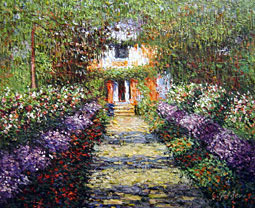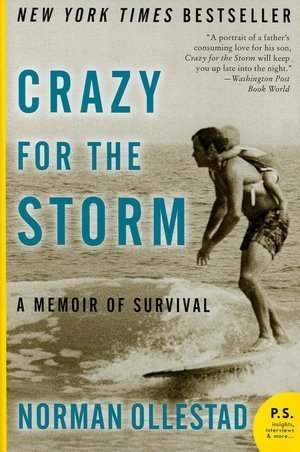Writing Tip #20: Setting the Scene
 Painters, like Monet, understand that location is "everything." Afterall, without a location, what would they paint? Location is what holds people, events, experience and without location, there is nothing but emptiness.
Painters, like Monet, understand that location is "everything." Afterall, without a location, what would they paint? Location is what holds people, events, experience and without location, there is nothing but emptiness. As a writer, using words on the canvas of the page and later, the mind of the reader, how do you establish location. Do you do this at all?
Writers new to the craft traditionally write 90% mental activity and this includes "telling" what happened--that is, event downloading. They usually give about 10% to location and setting. I offer up a different formula and invite you to flip the equation around. 80% showing of space, place, people, time, objects and senses and 20% to "what happened." And this includes the setting.
To ground your reader in time, space, place, a good writer knows that location is as vital to the story as the people and the events that take place. Without a location and the details that establish that location, the reader is unable to "land" and truly "experience" what the writer is sharing. Setting grounds the reader and grounds the experience. Setting also holds the forward moving action and can be referred back to again and again.
Prompt: Think about a significant moment from your life such as a turning point or a marker of transition. IE: the day your child was born, the car wreck that changed your life, the day you met your partner or realized you were in love (or told that person you were in love with them), a death in the family, a national disaster (9/11).
Before you write about the event, recall the setting which includes the day of the week, the time of day, the weather on that day, the season, the year (and events in the news that were happening at that time), the way the light moved through the room (if you were in a room), the direction of shadows, the foliage on the trees (if you are outside), the smell in the air, the sounds around you (was music playing, children laughing, dogs barking, bird song, toast hopping, water boiling), the furniture and what collected items lay around, the décor and so on. In one line write: The day so and so happened …and then spend the rest of the writing establishing the setting.
Example: Crazy for the Storm by Norman Ollestad, pg. 1-2
 February 19, 1979. At seven that morning my dad, his girlfriend Sandra and I took off from Santa Monica Airport headed for the mountains of Big Bear...
February 19, 1979. At seven that morning my dad, his girlfriend Sandra and I took off from Santa Monica Airport headed for the mountains of Big Bear...The Cessna 172 lifted and banked over Venice Beach then climbed over a cluster of buildings in Westwood and headed east. I sat in front, headphones and all, next to pilot Rob Arnold. Rob fingered the knobs along the instrument panel that curved toward the cockpit's ceiling. Intermittently, he rolled a large vertical dial next to his knee, the trim wheel, and the plane rocked like a seesaw before leveling off. Out the windshield, way in the distance, a dome of gray clouds covered the San Bernardino Mountains, the tops alone poking through. It was flat desert all around the cluster of peaks, and the peaks stood out of the desert as high as 10,000 feet.
I was feeling especially daring because I had just won the slalom championship and I thought about the big chutes carved into those peaks—concave slides, dropping from the top of the peaks down the faces of the mountains like deep wrinkles. I wondered if they were skiable.
Behind Rob sat my dad. He read the sports section and whistled a Willie Nelson tune that I'd heard him play on his guitar many times. I craned my head around to see behind my seat. Sandra was brushing out her silky dark brown hair. She's dressed kinda fancy, I thought.
How long, Dad? I said.
He peered over the top of the newspaper.
About thirty minutes, Boy Wonder, he said.
Homework: Notice setting in the book you are currently reading, or go find a few memoirs and make note of the setting in each one.
Remember, a well-rendered memoir establishes setting within the first few paragraphs and allows the personality of place, revealed through attention to detail, to lift and influence the story.
Published on January 30, 2012 09:17
No comments have been added yet.



